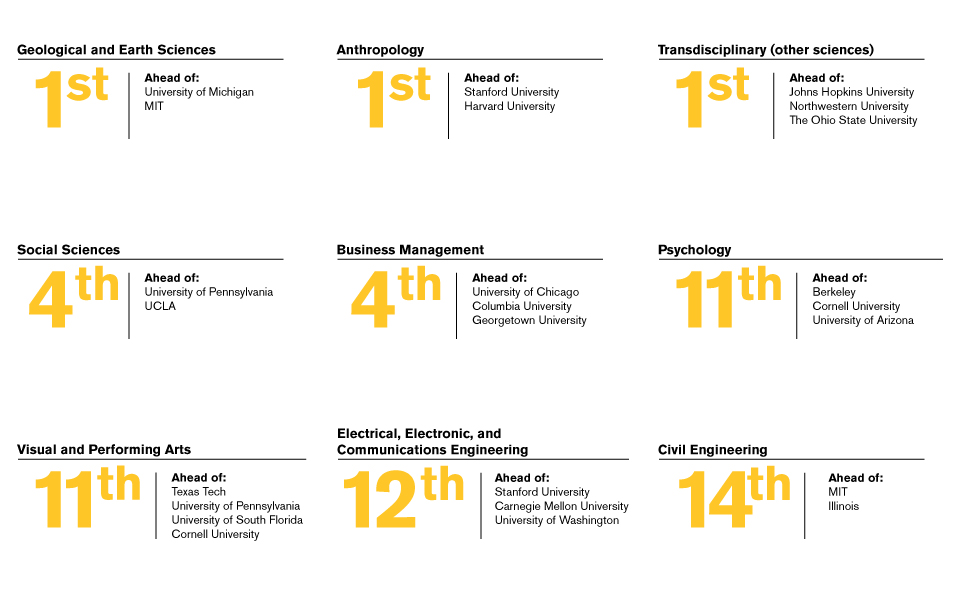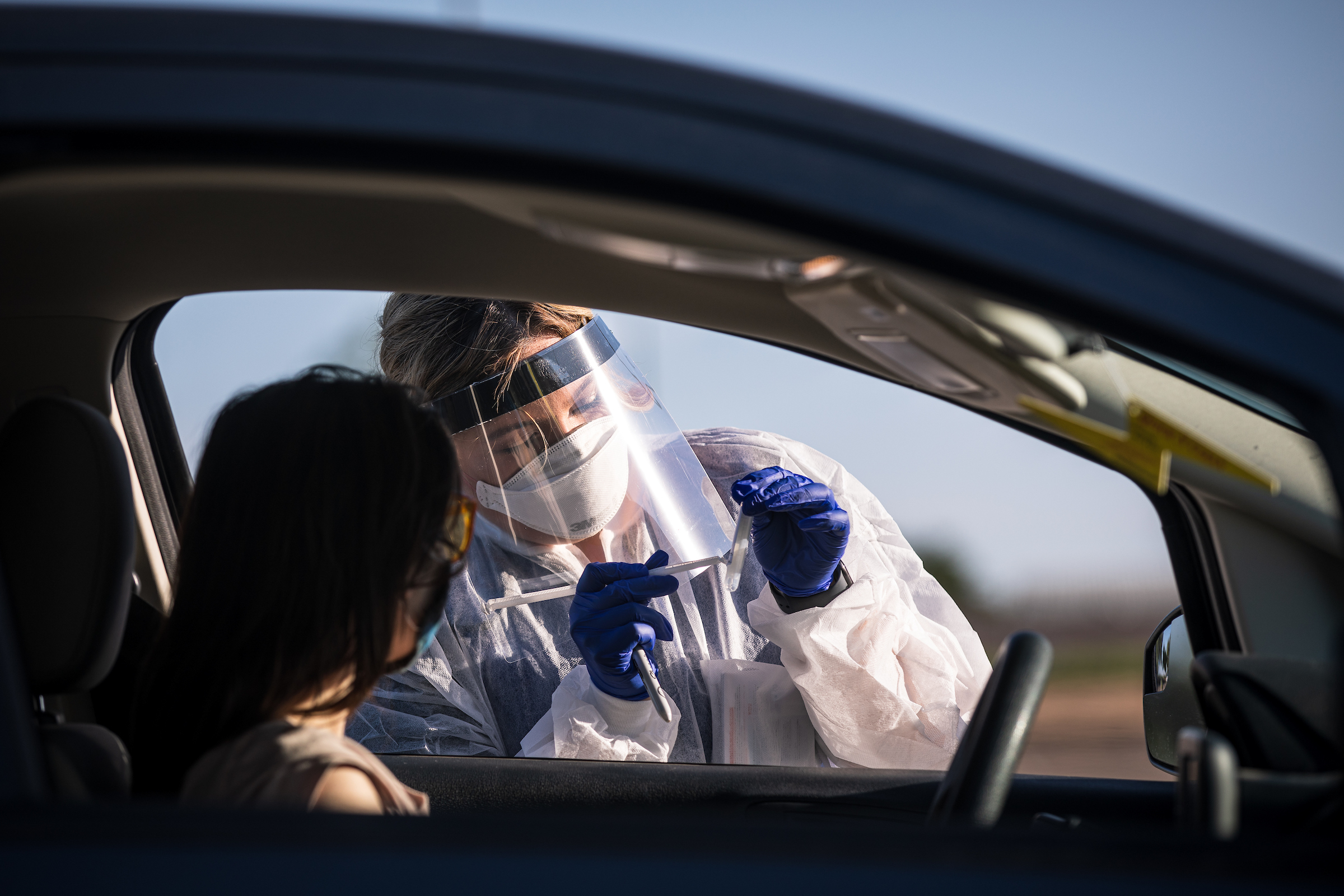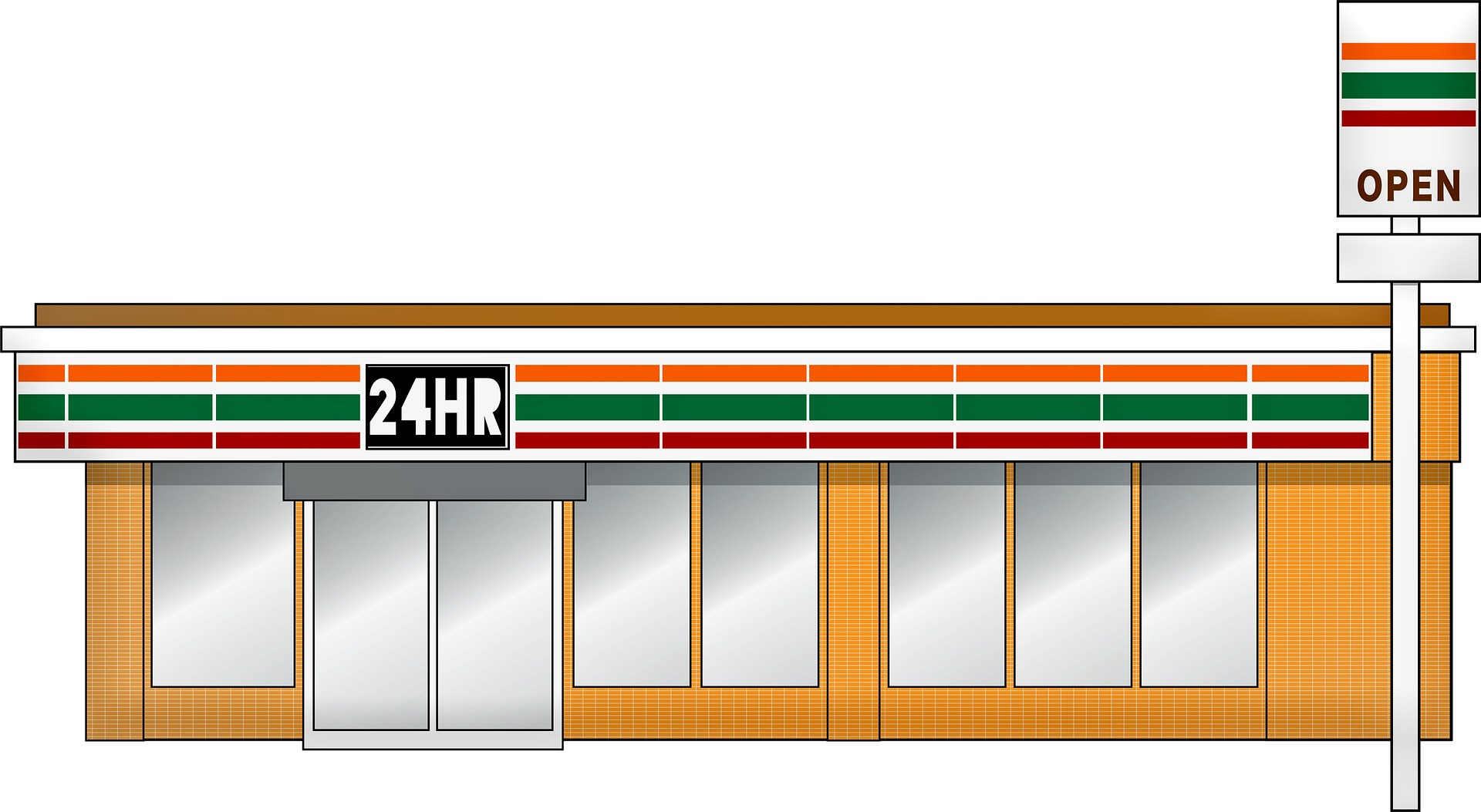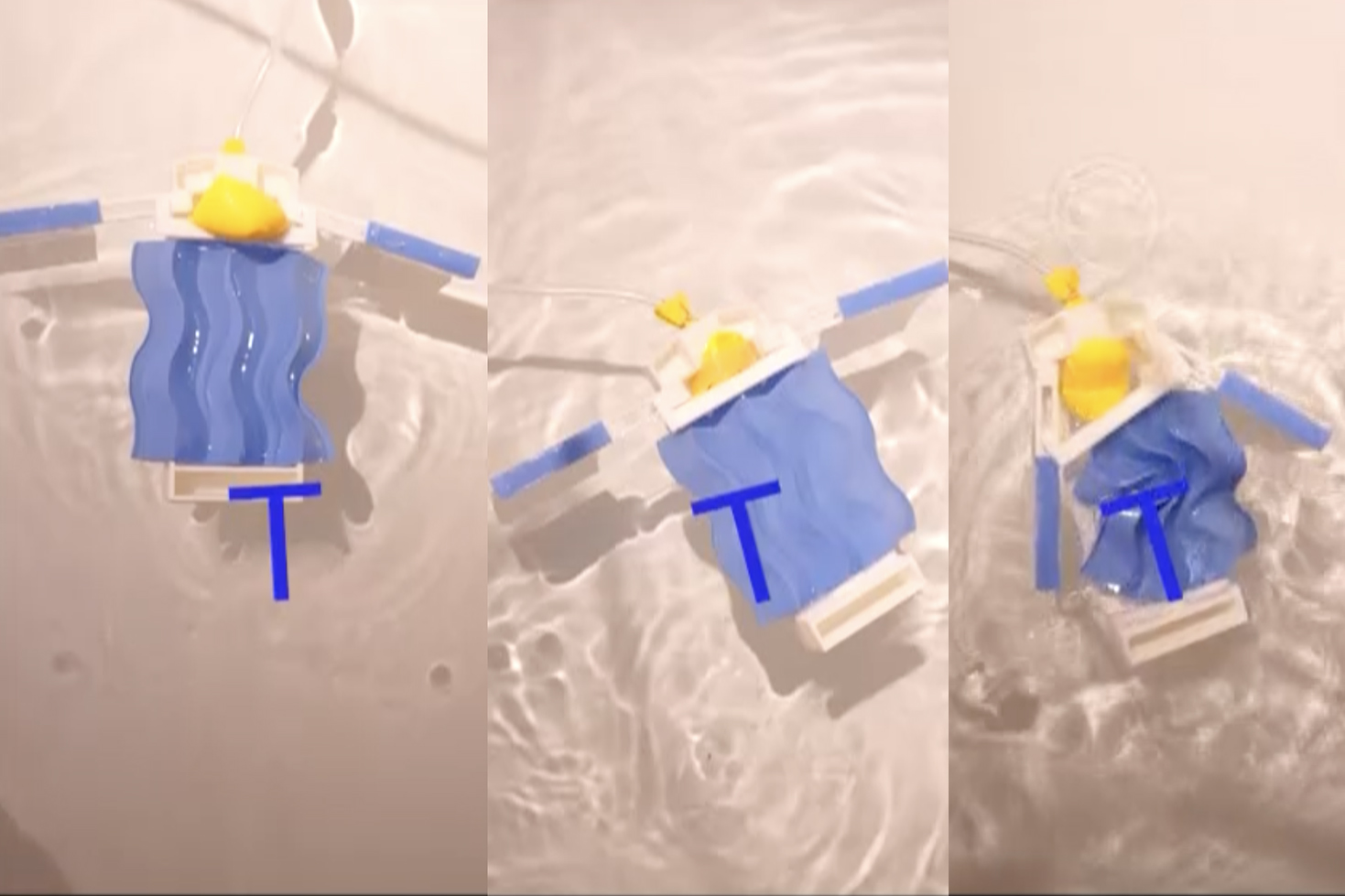ASU climbs to sixth in national research rankings
Strong growth in expenditures propelled by use-inspired research
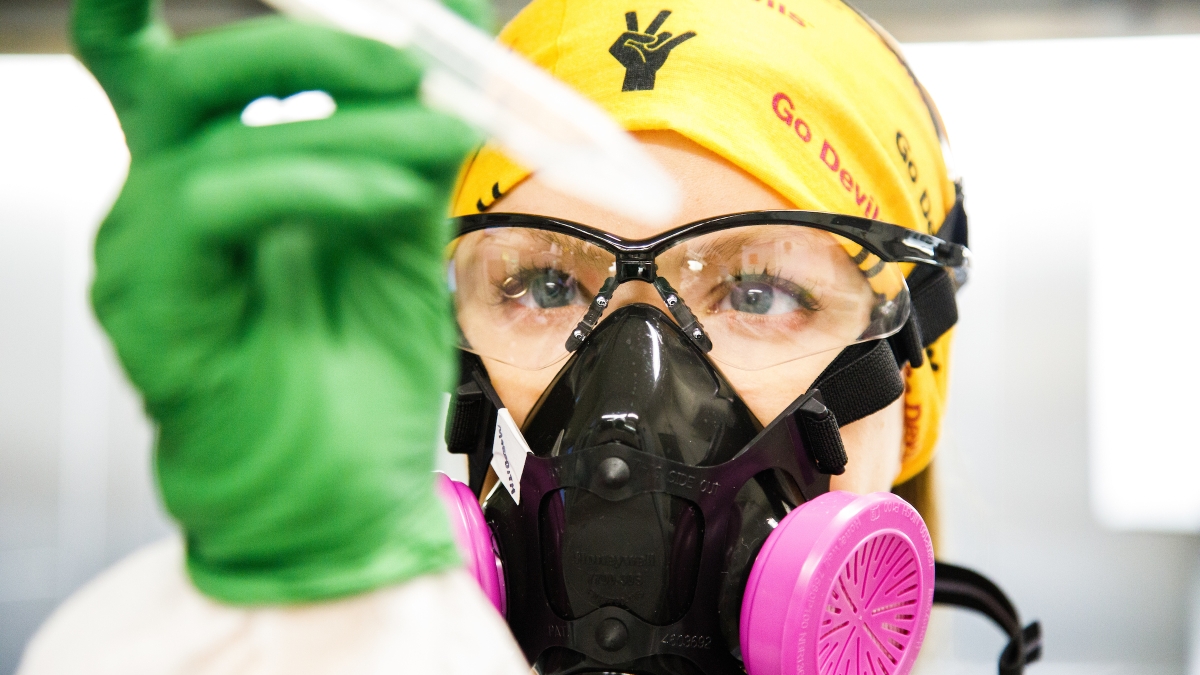
Editor’s note: This story is featured in the 2021 year in review.
Building on nearly two decades of unparalleled advancement, Arizona State University moved up to sixth out of 759 universities in the nation for total research expenditures among universities without a medical school, according to the latest National Science Foundation (NSF) Higher Education Research and Development (HERD) rankings.
With a total of $639.6 million in expenditures in fiscal year 2019, an increase of nearly $22 million from the previous year, ASU research has continued an upward trend and is among the leaders in research. At No. 6, ASU ranks alongside MIT, University of California-Berkeley, Georgia Tech and Purdue University and ahead of Carnegie Mellon University, Princeton and the University of Georgia. Since 2002, ASU research expenditures have grown more than fivefold, going from $123 million to nearly $640 million today.
In the most recent HERD rankings, ASU placed No. 26 overall among public institutions (of 405 total) in research expenditures, putting it alongside the University of Texas-Austin, Purdue University, Michigan State University and the University of Arizona and ahead of the University of Virginia, University of Alabama, University of Iowa and North Carolina State University.
ASU ranked No. 43 for all universities nationwide (of 916 total) with or without a medical school in FY19, placing it alongside the University of Illinois, the University of Texas-Austin, Purdue University, Michigan State University and ahead of the University of Chicago, California Institute of Technology and Princeton University.
Federal agencies, led by NASA and including NSF, Health and Human Services, the Department of Energy and the Department of Defense have invested substantial research dollars in ASU, along with investment from businesses, nonprofits and philanthropic sources, as well as state and local grants.
Each year through the HERD survey, the NSF updates its list of where the money for research is going. It’s a way to look under the hood of the machinery of a university to see how well the engines that power research are running. ASU’s rise in the HERD survey underscores its strength in research funding — and the confidence that major agencies and others have in ASU research.
“Research is a critical component of how we address the grand challenges we are collectively facing in today’s world,” said Sally C. Morton, executive vice president of ASU’s Knowledge Enterprise. “We must encourage, support and rely on solid scientific insights to help us persevere.
“I am confident we have the capabilities to discover impactful solutions to pandemics, climate change, cybersecurity and emerging health issues — all of which will challenge humankind well into the future. Through the transdisciplinary approach of talented ASU faculty and researchers, we are well-positioned to take on these challenges and work together to create a better future.”
Infographic by Alejandro Cabrera Ramirez
With gains in expenditures, the university continues to rise in the ranks of numerous specific categories. In the FY19 report, for example, ASU:
- Ranked No. 1 (of 353 universities) in geological and Earth sciences, ahead of MIT and the University of Michigan.
- Maintained the top spot (of 242 universities) in anthropology, ahead of Stanford and Harvard.
- Moved to No. 1 (of 247 universities) in transdisciplinary, multidisciplinary and other sciences, ahead of Johns Hopkins, Northwestern and Ohio State University.
- Ranked No. 4 (of 487 universities) in social sciences, putting it alongside Harvard and the University of Michigan and ahead of University of Pennsylvania and UCLA.
- Ranked No. 4 (of 377 universities) in business management and business administration, putting it alongside the University of Pennsylvania and MIT and ahead of the University of Chicago, Columbia University and Georgetown University.
- Ranked No. 11 (of 430 universities) in psychology, alongside Stanford and the University of Michigan and ahead of University of California-Berkeley, Cornell University and the University of Arizona.
- Ranked No. 11 (of 323 universities) in visual and performing arts, ahead of Texas Tech, the University of Pennsylvania, the University of South Florida, UCLA and Cornell.
- Ranked No. 12 (of 289 universities) in electrical, electronic and communications engineering, placing it with MIT, the University of Texas-Austin and Purdue and ahead of Stanford, Carnegie Mellon and the University of Washington.
- Ranked No. 14 (of 266 universities) in civil engineering, putting it alongside Georgia Tech, the University of Washington and the University of Michigan and ahead of MIT and the University of Illinois.
Funding agencies have increased investment of research dollars in ASU, resulting in additional advancement in rankings. ASU is ranked:
- Third (out of 441 universities) in NASA funding, placing it with Johns Hopkins University and the University of Colorado-Boulder and ahead of the California Institute of Technology, the University of Arizona and the University of Maryland.
- No. 10 (out of 415 universities) in Health and Human Services funding (including the National Institutes of Health) for universities without a medical school, putting it alongside Rockefeller University, the California Institute of Technology and the University of Georgia, and ahead of the University of Colorado-Boulder, Purdue and the University of Oregon.
- No. 23 (out of 604 universities) in NSF funding, placing it with the University of California-Berkeley, UCLA and the University of Minnesota and ahead of Johns Hopkins University, the University of Chicago and the University of Arizona.
Impact of research investment in ASU
While research dollars are at work across the university focused in many areas, here are some of the places where investment in ASU research has yielded the most significant impact:
Putting Mars in focus
This image, taken in the Spacecraft Assembly Facility's High Bay 1 at the Jet Propulsion Laboratory in Pasadena, California, on July 23, 2019, shows a close-up of the head of Mars 2020's remote sensing mast. The mast head contains the SuperCam instrument (its lens is in the large circular opening). In the gray boxes beneath the mast head are the two Mastcam-Z imagers. On the exterior sides of those imagers are the rover's two navigation cameras. Credit: NASA/JPL-Caltech
One research leader is Jim Bell of ASU’s School of Earth and Space Exploration. Bell is NASA’s principal investigator for Mastcam-Z, the sophisticated stereo cameras that will be the “eyes” of the next Mars rover, Perseverance, when it lands on the red planet this month.
Bell’s team led a research challenge to devise more powerful ways of seeing than any of the camera systems used on previous Mars rovers.
“Instead of using a single camera system, we wanted to use a pair of cameras that could go from wide-angle stereo, together, all the way to telescopic stereo, together, so we can build these beautiful 3D views of the Martian landscape,” Bell said. “We pitched that to NASA, saying we’ll use that 3D capability to help with driving decisions, to help with rover arm placement decisions and to help with science decisions.”
The stakes of success are among the biggest: the search for what might be traces of life on another planet. But Bell’s research also had to produce an instrument that serves the practical, hour-by-hour needs of safe driving and smart prospecting on a foreign landscape.
Mastcam-Z had to be refined by research so that it can do jobs as diverse as keeping the rover from getting stuck in deep Martian dust as well as seeing the best choices for sampling with Perseverance’s drills and lasers. It had to maintain its resilience while surviving the battering of launch and landing, plus the planet’s harsh temperature swings, which bounce between 50 degrees Fahrenheit and -150 F every day.
Pivoting to fight COVID-19
Medical community volunteers give instructions on using the straws and vials for collection at the free saliva-based tests at Ak-Chin Pavilion in west Phoenix. To date, more than 640,000 people throughout Arizona have been tested at one of the more than 100 ASU-created testing sites statewide. Photo by Charlie Leight/ASU News
In response to the COVID-19 crisis, ASU immediately turned a research lab led by Biodesign Institute Director Joshua LaBaer into the state’s first FDA-approved lab capable of performing thousands of COVID-19 tests per day. These tests quickly and accurately detect the virus for anyone with an active COVID-19 infection. In May, ASU researchers modified their approach to make it a saliva-based test, allowing more people to be tested easily and efficiently.
To date, more than 640,000 people throughout Arizona have been tested at one of the more than 100 ASU-created testing sites statewide.
“As we return to the workplace, schools and other daily activities, testing early and often is going to be the best way to help us prevent the spread of COVID-19,” said LaBaer.
But ASU’s COVID-19 response has been more than just testing for the virus. The university has played a pivotal role in a serosurvey conducted with the Maricopa County Department of Public Health and Mayo Clinic to estimate the prevalence of COVID-19 spread in the community. Based on the results of a random sampling taken across Maricopa County, the work provided an early estimate that 10.7% of residents — approximately 470,000 people — have been infected.
The urgent need for personal protective equipment (PPE) used by health care workers on the front lines of the pandemic moved ASU’s Luminosity Lab to set up the PPE Response Network to link university and community resources such as 3D printers and sewing equipment to hospitals that desperately needed face shields, medical gowns and nasal swabs. The network tracked the equipment from creation until its use in health facilities, and printed, sterilized and delivered thousands of pieces of PPE and other high-demand items for those on the front lines of the coronavirus response.
Now that vaccines are being administered in Arizona, ASU is playing a pivotal role in setting up and executing operations for the primary sites of vaccine distribution in Arizona. Based on its operational experience in setting up COVID-19 testing sites, ASU is currently supporting vaccination efforts at State Farm Stadium and at Phoenix Municipal Stadium.
Studying how nutrition affects kids’ health and behavior
For better or worse, our environments shape every aspect of our lives, including the food we eat. In a new study, researchers from ASU and Rutgers University found that children who live in an environment with a higher prevalence of unhealthy food sources, such as convenience stores, are more likely to gain weight over time. Image courtesy of Pixabay
Food is central to life. Punam Ohri-Vachaspati, an ASU professor of nutrition in the College of Health Solutions, studies how access to nutritious food and physical activity affects people’s health and behavior, especially in low-income, minority communities. She also analyzes the impact that food policies have within schools, child care centers and the community.
Her latest study found that children who live near unhealthy food sources, such as convenience stores, are more likely to gain weight over time. Specifically, an increased body mass index (BMI) was seen in children with greater exposure to convenience stores, whereas a lower BMI was seen in children with increased exposure to small grocery stores selling healthy items, like fruits and vegetables.
“If we see that the food environment has an impact on children's health, we can design policies to mitigate the negative impacts,” said Ohri-Vachaspati, who leads the ASU Food Policy and Environment Research Group. The group studies policies and programs that influence environments, food consumption, physical activity behaviors and health outcomes in disadvantaged populations.
Recently, Ohri-Vachaspati and her colleagues received funding to examine what, if any, effects that COVID-19 pandemic-related school closures have had on children’s weight.
Making robots rigid and flexible
Research that employs curved origami structures has dramatic implications in the development of robotics going forward, providing tunable flexibility — the ability to adjust stiffness based on function — that historically has been difficult to achieve using simple design. Photo by Zirui Zhai/ASU
The human hand is a mechanical wonder. It can firmly grip, and it can delicately lift. It can close to form a hard-hitting fist, or it can flex around an object to gently move it. Now try doing that with a robot.
Ranges of movement require varying amounts of rigidness and flexibility. Hands can do that instinctively. Robots, not so much. For mechanical and aerospace engineering Professor Hanqing Jiang, he applies techniques of origami and kirigami – which includes strategic cutting in addition to folding – to mechanical functions that can be used in robotics.
Recently, Jiang and his team developed curved origami structures that have dramatic implications for robotics, providing tunable flexibility — the ability to adjust stiffness based on function — a characteristic that historically has been difficult to achieve with simple design.
Robotics requires a variety of stiffness modes: High rigidity is necessary for lifting weights, high flexibility is needed for impact absorption, and negative stiffness, or the ability to quickly release stored energy like a spring, is needed for sprinting movements.
“Traditionally, the mechanics of accommodating rigidity variances can be bulky with nominal range,” said Jiang. “Origami enables the design of grippers, for example, made with strategic creases in sheets of flexible materials that can firmly grasp heavy objects and also gently grasp delicate ones. These movements usually require complicated sets of gears, hinges and motors.”
Jiang’s team is currently working on adding remote-control functions to curved origami structures that can be applied to fields beyond robotics.
As a New American University, ASU has built the foundation for researchers to be bold in creating new directions to solve society’s pressing problems. ASU is home to enormously talented professionals who intentionally collaborate across disciplines, develop partnerships and support the critical work ASU is doing locally, nationally and globally.
Top photo: Researchers in the ASU Biodesign Clinical Testing Lab work with COVID-19 tests. Photo by Felipe Esquivel Reed
